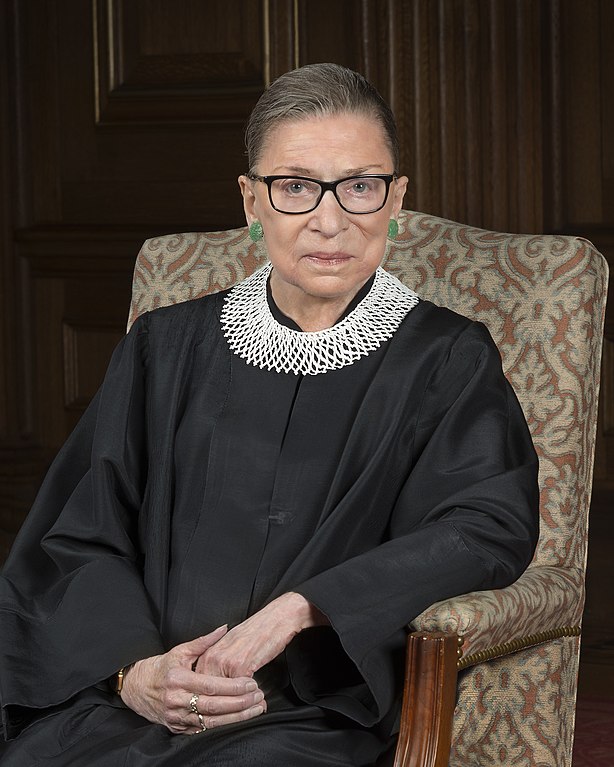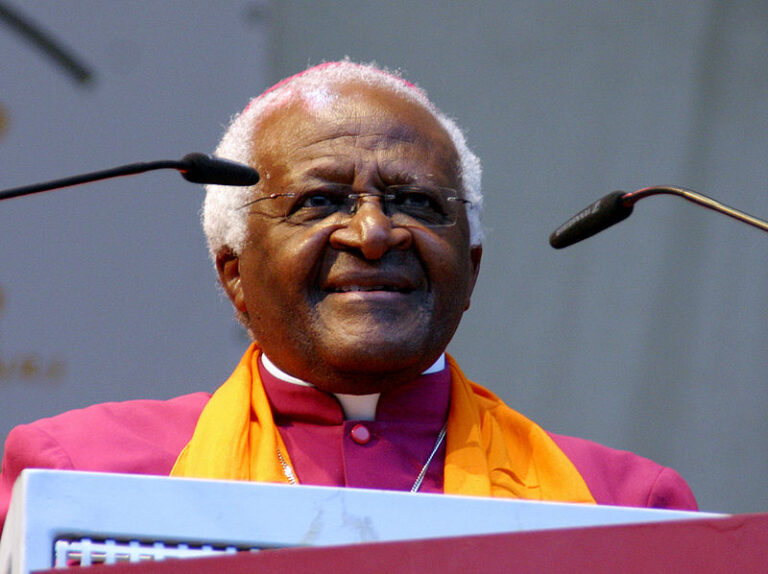Leading with Justice: Ruth Bader Ginsburg’s Legacy of Equality and Empathy

Unveiling the Remarkable Leadership Journey of Ruth Bader Ginsburg
In the realm of leadership, there are few figures as iconic and influential as Ruth Bader Ginsburg. With her unwavering commitment to justice and equality, Ginsburg not only reshaped the legal landscape of the United States but also left an indelible mark on the world. Her remarkable journey serves as a wellspring of wisdom for aspiring leaders across all fields.
Born on March 15, 1933, in Brooklyn, New York, Ruth Bader Ginsburg’s path to leadership was marked by determination, intellect, and an unyielding belief in the power of equality. From her early experiences navigating gender discrimination to her groundbreaking work as an attorney and judge, Ginsburg became a trailblazer in the pursuit of justice and equal rights.
Growing up in a working-class Jewish family, Ginsburg witnessed firsthand the struggles faced by marginalized communities and developed a deep empathy for those facing social injustices. Her mother, Celia Bader, played a pivotal role in shaping Ginsburg’s values, instilling in her a strong sense of fairness and the importance of education. These formative experiences laid the foundation for Ginsburg’s future leadership endeavors.
Ginsburg’s educational journey was a testament to her intellectual prowess and tenacity. She graduated from Cornell University at the top of her class before pursuing her legal studies at Harvard Law School. Despite facing discrimination as one of the few women in her class, she excelled academically and ultimately transferred to Columbia Law School, where she earned her law degree. These early experiences of overcoming gender bias and discrimination would fuel Ginsburg’s determination to dismantle barriers and achieve equality throughout her career.
As a young lawyer, Ginsburg encountered difficulties in securing employment due to her gender. Undeterred, she channeled her energy into advocating for gender equality and became a tireless champion for women’s rights. Her strategic litigation approach, carefully selecting cases that challenged discriminatory laws, propelled her to the forefront of the fight for gender equality. Ginsburg’s groundbreaking work as an attorney led to her appointment to the United States Court of Appeals for the District of Columbia Circuit in 1980 and, eventually, to the Supreme Court in 1993, where she would serve for 27 years.
Throughout her tenure on the Supreme Court, Ginsburg displayed a unique leadership style characterized by collegiality, consensus-building, and an unwavering commitment to principle. Despite the ideological differences among her colleagues, Ginsburg sought common ground and worked tirelessly to bridge divides, fostering an environment of collaboration and respect. Her ability to build consensus while remaining true to her principles serves as a valuable lesson for leaders navigating complex and diverse teams.
Beyond her legal accomplishments, Ruth Bader Ginsburg’s leadership legacy also extends to her profound sense of empathy and compassion. Throughout her career, she consistently championed the rights of marginalized communities and individuals who had been traditionally overlooked or dismissed. Her empathy, coupled with her intellectual rigor, allowed her to approach each case with a deep understanding of its human impact. Ginsburg exemplified the delicate balance between impartiality and compassion, serving as a shining example for leaders seeking to make a positive impact on society.
As we delve into the leadership lessons and stories of Ruth Bader Ginsburg, we embark on a journey that traverses not only the legal landscape but also the very essence of what it means to lead with integrity, resilience, and empathy. From her strategic litigation and advocacy to her unwavering pursuit of justice, Ginsburg’s legacy is a testament to the power of leadership in effecting meaningful change.
In the subsequent sections of this article, we will explore the formative influences that shaped Ginsburg’s leadership style, the challenges she faced and overcame, and the profound impact she had on equality and justice. Through a comprehensive analysis of her life and career, we will uncover the leadership lessons and stories that continue to inspire and guide leaders of today and tomorrow.
Join us as we delve into the remarkable life and leadership journey of Ruth Bader Ginsburg, a beacon of justice and equality whose legacy will forever resonate in the annals of history.
Early Life and Education
Ruth Bader Ginsburg’s formative years and educational experiences played a crucial role in shaping her leadership journey. Born in a time when gender roles and societal expectations limited opportunities for women, Ginsburg’s early life was marked by determination, resilience, and a fierce commitment to academic excellence.
Growing up in Brooklyn, New York, Ginsburg was raised in a working-class family. Her parents, Nathan and Celia Bader, instilled in her a deep sense of justice and the importance of education. Celia, in particular, was a driving force in Ginsburg’s life, encouraging her daughter to defy societal norms and pursue her ambitions. Celia’s own experience as a working woman, who faced barriers and discrimination, undoubtedly influenced Ginsburg’s lifelong dedication to dismantling gender inequality.
Education became a cornerstone of Ginsburg’s journey towards leadership. She demonstrated exceptional academic abilities from a young age and was recognized as a gifted student. In high school, she excelled in her studies, developing a keen intellect and a love for learning that would shape her future endeavors. Ginsburg’s academic achievements laid the groundwork for her ascent to leadership, providing her with a solid foundation of knowledge, critical thinking skills, and a thirst for justice.
In 1950, Ruth Bader Ginsburg enrolled at Cornell University, where she would embark on a path that would set her apart as a leader. Despite facing gender bias and societal expectations that discouraged women from pursuing higher education, Ginsburg thrived academically and became one of only a handful of women studying law at the time. She graduated Phi Beta Kappa, earning a Bachelor of Arts degree in government with honors.
Ginsburg’s time at Cornell was transformative, not only for her intellectual growth but also for her personal development. It was during her undergraduate years that she met her future husband, Martin Ginsburg, who would become her lifelong partner and a steadfast supporter of her ambitions. Their partnership, characterized by mutual respect and shared goals, would provide Ginsburg with unwavering support throughout her career.
After completing her undergraduate studies, Ginsburg faced numerous challenges as she sought to pursue a legal education. She was met with resistance and bias, encountering closed doors and limited opportunities simply because of her gender. Undeterred, Ginsburg enrolled at Harvard Law School, where she became one of only nine women in a class of over five hundred.
At Harvard, Ginsburg’s intellectual abilities shone brightly, but she faced discrimination and isolation as a woman in a predominantly male environment. Despite the obstacles, she persevered, excelling academically and earning a coveted spot on the Harvard Law Review. However, her experiences at Harvard underscored the pervasive gender bias in the legal profession and further fueled her determination to break down barriers for future generations of women.
Transferring to Columbia Law School for her final year, Ginsburg graduated tied for first in her class in 1959. Despite her outstanding academic achievements, she faced significant challenges in securing employment due to prevailing gender stereotypes. The pervasive discrimination she encountered in the legal profession only served to strengthen her resolve to fight for gender equality.
Ginsburg’s early experiences with gender bias and her unwavering commitment to academic excellence laid the groundwork for her leadership journey. She developed resilience, determination, and a deep understanding of the systemic barriers that perpetuated inequality. These early years not only forged her intellect but also instilled in her the values and principles that would guide her as a leader.
In the subsequent sections of this article, we will explore the ways in which Ginsburg overcame gender bias and discrimination, employing strategic litigation and advocacy to effect lasting change. We will examine her pivotal role in advancing gender equality, breaking down barriers, and reshaping the legal landscape. Through her tireless dedication and unwavering belief in justice, Ruth Bader Ginsburg became an iconic leader whose lessons continue to inspire and empower leaders in their own journeys.
Overcoming Gender Bias and Advocating for Equality
Ruth Bader Ginsburg’s leadership journey was indelibly shaped by her experiences with gender bias and her unwavering commitment to advocating for equality. Throughout her career, she encountered numerous obstacles and faced systemic discrimination, yet she persevered, leading the charge for gender equality and leaving an enduring legacy.
As a young lawyer, Ginsburg faced the harsh realities of a legal profession that systematically marginalized and limited the opportunities available to women. Doors were often closed to her solely because of her gender, and she witnessed firsthand the barriers that hindered the progress of women in all spheres of society. These early encounters with gender bias ignited a fire within Ginsburg, propelling her to take action and fight for equal rights under the law.
Ginsburg’s approach to dismantling gender bias was strategic and deliberate. She understood that systemic change required not only legal victories but also a broader societal shift in attitudes and perceptions. Through her work as an attorney, she carefully selected cases that challenged discriminatory laws and regulations, aiming to create legal precedents that would pave the way for gender equality.
One of the most significant early cases Ginsburg argued before the Supreme Court was Reed v. Reed (1971). The case centered on an Idaho law that automatically favored men over women in the appointment of administrators for estates. Ginsburg argued that the law violated the Equal Protection Clause of the Fourteenth Amendment. Her argument, based on the principle of gender equality, persuaded the Court to strike down the law, marking a groundbreaking victory in the fight for women’s rights.
Throughout her career, Ginsburg consistently challenged discriminatory laws that perpetuated gender inequality. She fought against employment practices that limited opportunities for women, such as mandatory maternity leave policies that disproportionately affected female employees. Her legal advocacy sought to challenge and dismantle the systemic barriers that hindered women from achieving their full potential.
Ginsburg’s impact extended beyond the courtroom. As a founding counsel for the Women’s Rights Project at the American Civil Liberties Union (ACLU), she played a pivotal role in shaping the legal strategies that advanced women’s rights. She strategically pursued cases that addressed issues such as pregnancy discrimination, access to contraception, and equal pay, aiming to establish legal protections that would ensure equal opportunities for women in all facets of life.
Her tireless efforts resulted in numerous legal victories that progressively dismantled gender discrimination. Ginsburg’s work led to the recognition that gender-based classifications were subject to strict scrutiny, a significant legal standard that elevated the scrutiny applied to laws treating men and women differently. Her arguments and legal victories laid the groundwork for future advancements in gender equality jurisprudence.
However, Ginsburg’s leadership in the fight for gender equality extended far beyond her legal accomplishments. She understood the importance of creating broader societal change and shifting cultural attitudes towards gender roles. Ginsburg believed in the power of education and advocacy to challenge stereotypes and promote understanding. She spoke out on issues of gender equality, delivering powerful speeches that highlighted the importance of equal rights for women and the need for progress.
Ginsburg’s legacy as a champion for gender equality is exemplified by her role on the Supreme Court. As the second woman ever appointed to the Court, she became a symbol of hope and inspiration for countless individuals. Throughout her tenure, Ginsburg consistently advocated for women’s rights and stood as a steadfast voice against regressive interpretations of the law.
Her dissents on cases that threatened to roll back hard-won progress showcased her unwavering commitment to justice. Ginsburg’s powerful and eloquent dissenting opinions, often referred to as “Notorious RBG” dissents, captured the attention and imagination of the public, transforming her into a cultural icon and a symbol of resilience and determination.
Ruth Bader Ginsburg’s leadership journey and her unwavering dedication to dismantling gender bias and advocating for equality serve as a beacon of inspiration for leaders everywhere. Her strategic approach to challenging discriminatory laws, her groundbreaking legal victories, and her ability to effect societal change through education and advocacy all contribute to a legacy that continues to shape the landscape of gender equality.
In the subsequent sections of this article, we will delve deeper into Ginsburg’s persistence and resilience, examining how she navigated setbacks and challenges throughout her career. Through her remarkable journey, we will glean valuable leadership lessons on cultivating determination, resilience, and a relentless commitment to fighting for equality.
Persistence and Resilience
Ruth Bader Ginsburg’s leadership journey was marked by an unwavering spirit of persistence and resilience. Throughout her career, she encountered numerous obstacles, setbacks, and personal challenges, yet she remained steadfast in her pursuit of justice and equality. Ginsburg’s ability to overcome adversity serves as a powerful lesson for leaders facing their own trials and tribulations.
One of the earliest examples of Ginsburg’s persistence can be seen in her experiences as a young law graduate seeking employment. Despite her exceptional academic achievements and undeniable talent, she faced pervasive gender bias that limited opportunities for women in the legal profession. Many law firms rejected her solely based on her gender, refusing to consider her qualifications.
Undeterred by these setbacks, Ginsburg refused to be defined by the closed doors. Instead, she sought alternative paths to establish herself as a legal force to be reckoned with. She began teaching law, first as an assistant professor at Rutgers Law School and later at Columbia Law School. Ginsburg’s tenure as an educator allowed her to not only inspire future generations but also to deepen her understanding of the law and further refine her advocacy skills.
As she faced gender discrimination and societal expectations, Ginsburg channeled her frustration into strategic activism and litigation. Recognizing that lasting change required challenging discriminatory laws, she carefully selected cases that would allow her to make significant legal arguments on behalf of gender equality. Ginsburg’s meticulous approach to litigation involved building solid legal foundations, relying on compelling legal reasoning, and strategically choosing the right cases to challenge discriminatory practices.
Throughout her career, Ginsburg faced countless setbacks and disappointments, both personally and professionally. However, she possessed an unwavering determination to persist and continue the fight for justice. In the face of defeat or setbacks, Ginsburg found the strength to regroup, reevaluate her strategies, and press forward.
One of the most notable examples of Ginsburg’s resilience can be seen in her efforts to advocate for equal rights for women before the Supreme Court. In cases such as Frontiero v. Richardson (1973) and United States v. Virginia (1996), Ginsburg faced challenging legal landscapes and resistant ideologies. However, she refused to back down, utilizing her legal expertise, intellect, and persuasive arguments to push for gender equality.
Even in cases where she found herself in the minority, Ginsburg’s dissents demonstrated her unwavering commitment to justice. She used her powerful voice to articulate the legal and moral arguments for gender equality, recognizing that change often starts with planting seeds of dissent that may grow into future victories.
Ginsburg’s personal journey also tested her resilience. Throughout her life, she faced health challenges, including battles with cancer. Despite undergoing various treatments and surgeries, Ginsburg remained steadfast in her commitment to her work on the Supreme Court, refusing to let her health setbacks impede her pursuit of justice. Her resilience in the face of personal struggles is a testament to her extraordinary determination and dedication to her role as a leader.
Ginsburg’s leadership style embodied the belief that setbacks are not permanent roadblocks but opportunities for growth and resilience. She believed that true leadership requires the ability to weather storms, adapt to changing circumstances, and persist even when faced with seemingly insurmountable challenges.
Leaders can draw valuable lessons from Ginsburg’s persistence and resilience. Firstly, it is essential to maintain unwavering dedication to one’s goals, even in the face of adversity. Leaders must cultivate the inner strength to persevere when confronted with setbacks, rejection, or opposition. Ginsburg’s example teaches us that determination and persistence are powerful tools that can pave the way for success and positive change.
Secondly, leaders must be adaptable and willing to reevaluate their strategies when faced with obstacles. Ginsburg’s ability to learn from defeats, refine her arguments, and select strategic cases highlights the importance of flexibility and the ability to adapt to changing circumstances. Leaders must be open to new approaches, innovative solutions, and alternative paths to achieve their objectives.
Lastly, leaders can learn from Ginsburg’s courage to dissent and speak out against injustice. In the face of dissenting opinions or setbacks, it is crucial to remain steadfast in one’s convictions and continue advocating for what is right. Ginsburg’s ability to articulate dissenting opinions with clarity and conviction demonstrates the power of staying true to one’s principles and standing up for what one believes in.
Ruth Bader Ginsburg’s journey is a testament to the power of persistence and resilience in leadership. Her ability to overcome obstacles, learn from setbacks, and remain dedicated to her mission serves as an inspiration for leaders across all domains. As we face our own challenges and setbacks, we can draw strength from Ginsburg’s example and embrace the qualities of persistence and resilience to create lasting impact and drive positive change.
Collegiality and Consensus-Building
Ruth Bader Ginsburg’s leadership style was characterized by a commitment to collegiality and consensus-building, even in the midst of deeply divided opinions. Throughout her tenure on the Supreme Court, Ginsburg exemplified the art of bridging ideological gaps and fostering a spirit of collaboration among her colleagues. Her approach to leadership offers valuable insights for leaders seeking to navigate diverse teams and build consensus in contentious environments.
Ginsburg recognized that effective leadership required more than just advocating for her own perspectives. She understood the importance of listening, understanding differing viewpoints, and finding common ground. Despite her unwavering commitment to her own principles, Ginsburg approached her colleagues with respect and a genuine willingness to engage in thoughtful dialogue.
One notable example of Ginsburg’s commitment to collegiality was her friendship with Justice Antonin Scalia, known for his conservative jurisprudence. Despite their stark ideological differences, Ginsburg and Scalia shared a deep mutual respect and admiration for each other’s intellect and passion for the law. They often attended cultural events together and celebrated their shared love for opera. Their friendship demonstrated that genuine connections and respectful relationships could transcend political differences, fostering an environment of trust and open communication.
Ginsburg’s approach to consensus-building extended beyond her relationship with Scalia. She actively sought opportunities to find common ground with her colleagues, engaging in strategic alliances and building coalitions to advance her objectives. By identifying shared values and principles, Ginsburg could work collaboratively to influence the Court’s decisions and shape legal outcomes.
One instance where Ginsburg’s consensus-building skills were on display was in the landmark case of Olmstead v. L.C. (1999). The case involved the rights of individuals with disabilities to receive community-based services instead of being institutionalized. Ginsburg authored the majority opinion, which held that unjustified institutionalization amounted to a violation of the Americans with Disabilities Act. In crafting the opinion, Ginsburg successfully built a broad consensus among her colleagues, resulting in a unanimous decision that advanced the rights of individuals with disabilities.
Ginsburg’s ability to bridge ideological divides and build consensus was also evident in cases involving gender equality. For instance, in United States v. Virginia (1996), she authored the majority opinion, which held that the Virginia Military Institute’s male-only admissions policy violated the Equal Protection Clause. Through her persuasive arguments and inclusive approach, Ginsburg garnered a majority consensus and achieved a significant victory for gender equality.
Leaders can learn from Ginsburg’s approach to consensus-building in diverse and contentious environments. Firstly, leaders should foster an atmosphere of respect and open dialogue, where differing opinions are valued and heard. By creating a safe space for diverse perspectives, leaders can encourage collaboration and the exchange of ideas.
Secondly, leaders should actively seek common ground and shared values among team members. By identifying areas of agreement, leaders can build bridges and find pathways toward consensus. This requires active listening, empathy, and a genuine commitment to understanding the perspectives of others.
Furthermore, leaders should embrace strategic alliances and coalitions to advance their goals. Building relationships and seeking partnerships with individuals who have differing viewpoints can expand influence, create synergies, and foster a collaborative environment.
Ginsburg’s leadership style also underscores the importance of leading by example. She consistently demonstrated respect, integrity, and a commitment to the principles of fairness and justice. By embodying these qualities, Ginsburg inspired her colleagues to engage in constructive dialogue and strive for consensus, even in the face of deep divisions.
Ruth Bader Ginsburg’s approach to leadership through collegiality and consensus-building offers valuable insights for leaders seeking to navigate diverse teams and contentious environments. Her ability to foster respectful relationships, bridge ideological gaps, and build consensus underscores the power of collaboration and open dialogue in achieving meaningful outcomes. By emulating Ginsburg’s inclusive leadership style, leaders can create environments that encourage the exchange of ideas, bridge divisions, and drive positive change.
Strategic Litigation and Advocacy
Ruth Bader Ginsburg’s leadership legacy extends beyond her role as a Supreme Court Justice. Throughout her career, she leveraged strategic litigation and advocacy to effect social change and advance civil rights. Ginsburg’s approach to using the law as a tool for justice offers valuable lessons for leaders seeking to create meaningful impact in their respective fields.
Ginsburg recognized the power of strategic litigation in challenging discriminatory laws and practices. She carefully selected cases that had the potential to set significant legal precedents, understanding that each victory would pave the way for future progress. Ginsburg’s strategic approach involved identifying cases with strong legal arguments, selecting plaintiffs who could evoke empathy and represent a broader constituency, and strategically timing the presentation of these cases before the courts.
One of Ginsburg’s notable strategic victories came in the case of Weinberger v. Wiesenfeld (1975). The case involved a widower who sought survivor benefits under the Social Security Act, which at the time provided benefits to widows but not widowers caring for young children. Ginsburg, then serving as the director of the Women’s Rights Project at the ACLU, argued before the Supreme Court that the gender-based distinction in the law violated the Equal Protection Clause of the Constitution. The Court ruled in favor of Wiesenfeld, marking a significant step towards gender equality in the realm of survivor benefits.
Ginsburg’s strategic litigation extended to other areas of civil rights and liberties. She played a pivotal role in advocating for reproductive rights, including her defense of the landmark case Roe v. Wade (1973), which established the constitutional right to abortion. Ginsburg recognized the importance of reproductive autonomy and fought against attempts to roll back women’s access to reproductive healthcare throughout her tenure on the Supreme Court.
Additionally, Ginsburg actively engaged in advocacy beyond the courtroom. She understood the power of public discourse in shaping societal attitudes and policies. Ginsburg delivered speeches, participated in panel discussions, and wrote extensively on issues of gender equality and social justice. Her writings and public engagements provided a platform to articulate the legal and moral arguments for equality and paved the way for broader societal change.
Ginsburg’s leadership in strategic litigation and advocacy illustrates several key lessons for leaders. First and foremost, leaders must identify strategic opportunities where they can use their influence, expertise, and resources to effect change. This involves staying informed about current issues, understanding the legal and policy landscapes, and identifying areas where systemic change is needed.
Secondly, leaders must be intentional in selecting and framing their arguments. Ginsburg’s success in strategic litigation stemmed from her ability to present compelling legal arguments that resonated with the courts and the public. Leaders must carefully craft their messages, drawing on evidence, precedent, and moral reasoning to build a strong case for change.
Furthermore, leaders must recognize the importance of collaboration and coalition-building in advocacy efforts. Ginsburg often worked alongside like-minded individuals, organizations, and activists to amplify her impact. By joining forces and pooling resources, leaders can create a stronger collective voice that is better positioned to effect change.
Lastly, leaders must be persistent and resilient in the face of adversity. Ginsburg encountered significant resistance and pushback throughout her career, yet she remained steadfast in her pursuit of justice. Leaders must be prepared for setbacks, challenges, and resistance, but they must remain committed to their cause and press forward, adapting their strategies as needed.
Ruth Bader Ginsburg’s strategic litigation and advocacy serve as a testament to the power of using the law as a catalyst for change. Her approach to effecting social change through legal avenues offers valuable insights and inspiration for leaders seeking to make a positive impact on issues of civil rights, equality, and justice. By combining strategic thinking, advocacy, and collaboration, leaders can follow in Ginsburg’s footsteps and drive meaningful progress in their respective fields.
Empathy and Compassion in Leadership
Ruth Bader Ginsburg’s leadership journey was characterized not only by her legal acumen and strategic prowess but also by her deep empathy and compassion for those whose rights were marginalized or ignored. Throughout her career, Ginsburg demonstrated a remarkable ability to balance empathy with the impartiality required in her judicial role, making her an exceptional leader and a beacon of compassion in the pursuit of justice.
Ginsburg’s empathy was rooted in her own experiences with discrimination and marginalization. As a woman in a male-dominated profession, she faced gender bias firsthand. These experiences fueled her determination to challenge the status quo and fight for the rights of those facing systemic oppression. Ginsburg understood that empathy was not only a powerful motivator but also a fundamental aspect of understanding the lived experiences of those affected by discriminatory practices.
One area in which Ginsburg’s empathy and compassion shone brightly was in her dedication to women’s rights. Throughout her career, she championed causes related to reproductive autonomy, equal pay, and workplace fairness. Ginsburg recognized that these issues were not abstract legal concepts but deeply personal matters that affected the lives of individuals and their families. She understood the importance of connecting with the human stories behind the legal cases, amplifying the voices of those impacted, and advocating for their rights.
In her judicial opinions and dissents, Ginsburg’s empathy was evident in her eloquent and compelling writing. She had a unique ability to convey the human consequences of legal decisions, emphasizing the real-world impact on the lives of individuals. Ginsburg’s empathy extended beyond legal arguments; it was a guiding principle that informed her understanding of justice and equality.
Furthermore, Ginsburg’s empathy extended beyond the cases she encountered on the bench. She recognized the importance of engaging with the communities affected by legal decisions. Ginsburg often made an effort to visit schools, universities, and organizations to listen to people’s stories, understand their struggles, and learn firsthand about the challenges they faced. By engaging directly with individuals and communities, Ginsburg deepened her understanding of the human impact of legal issues and developed a more nuanced perspective.
Ginsburg’s commitment to empathy and compassion in leadership also extended to her interactions with colleagues. Despite ideological differences, she treated her fellow justices with respect and kindness, recognizing the value of maintaining collegiality and fostering an atmosphere of civility. Ginsburg understood that effective leadership required finding common ground and building relationships, even with those whose opinions diverged from her own.
Leaders can draw valuable lessons from Ginsburg’s approach to empathy and compassion. Firstly, leaders must prioritize understanding the experiences and perspectives of those they lead. This requires active listening, seeking diverse viewpoints, and creating spaces where individuals feel safe to share their stories and concerns. By demonstrating empathy, leaders foster an inclusive environment where everyone’s voice is valued and heard.
Secondly, leaders must be willing to use their positions of influence to amplify the voices of marginalized and underrepresented communities. Ginsburg recognized that her platform allowed her to advocate for those who lacked the same level of visibility and power. Leaders can follow her example by advocating for social justice, using their influence to address systemic inequalities, and uplifting marginalized voices.
Moreover, leaders must balance empathy with the impartiality and objectivity required in decision-making. While empathy is essential in understanding the human impact of choices, leaders must also consider the broader consequences and implications of their decisions. Ginsburg’s ability to strike this balance allowed her to deliver opinions that were both empathetic and legally sound.
Lastly, leaders must cultivate a culture of empathy within their organizations or teams. By fostering an environment where empathy is valued and encouraged, leaders can empower their teams to understand and support one another, fostering collaboration, and creating a sense of belonging.
Ruth Bader Ginsburg’s legacy as a leader exemplified the power of empathy and compassion in the pursuit of justice. Her ability to connect with others, understand their struggles, and advocate for their rights demonstrated that leadership rooted in empathy can drive significant change. By incorporating empathy and compassion into their own leadership approaches, leaders can create a more just, inclusive, and compassionate world.
Legacy and Lasting Impact
Ruth Bader Ginsburg’s leadership journey left an enduring legacy that continues to shape the realms of law, gender equality, and social justice. Her impact extends far beyond her tenure on the Supreme Court, as she inspired generations of leaders, transformed legal landscapes, and became a cultural icon. Ginsburg’s legacy serves as a testament to the power of leadership in effecting lasting change.
One of the most significant aspects of Ginsburg’s legacy is her role in advancing gender equality. Through strategic litigation, advocacy, and her judicial decisions, Ginsburg played a pivotal role in dismantling legal barriers and reshaping the landscape for women’s rights. Her unwavering commitment to gender equality set important legal precedents and established principles that continue to guide legal interpretation today.
Ginsburg’s opinions and dissents on gender discrimination cases have become influential touchstones in legal discourse. Her eloquent writing and powerful arguments have resonated with legal scholars, activists, and individuals fighting for gender equality. Ginsburg’s jurisprudence contributed to the recognition that gender-based classifications warrant heightened scrutiny and that equality under the law encompasses the rights and dignity of all individuals.
Moreover, Ginsburg’s impact extended beyond gender equality. Her commitment to civil liberties, voting rights, LGBTQ+ rights, and racial justice shaped her legacy as a champion of social justice and equality for all. She consistently stood up for the marginalized, the vulnerable, and those who had historically been denied equal protection under the law. Ginsburg’s powerful dissents and opinions continue to serve as guiding principles for future generations of advocates and leaders fighting for justice.
In addition to her legal impact, Ginsburg’s legacy is also rooted in her role as a cultural icon and an inspiration for millions. Fondly referred to as the “Notorious RBG,” Ginsburg captured the imagination of people around the world. Her strength, intelligence, and unwavering commitment to justice made her an icon of resilience and determination. Her pop culture presence, including books, movies, and merchandise, elevated her status beyond the legal sphere, spreading her message of equality and inspiring a new generation of leaders.
Ginsburg’s legacy also lies in the inspiration and empowerment she provided to aspiring leaders, particularly women. Her life and career shattered glass ceilings, serving as a beacon of hope and proof that gender should never limit one’s aspirations or achievements. Ginsburg’s journey from facing discrimination as a young law graduate to becoming a revered Supreme Court Justice sent a powerful message that perseverance, resilience, and unwavering dedication can overcome even the most formidable obstacles.
Furthermore, Ginsburg’s leadership style, characterized by collegiality, consensus-building, empathy, and strategic thinking, continues to serve as a model for leaders across all domains. Her ability to bridge ideological divides and find common ground exemplifies the power of collaboration and respectful dialogue. Ginsburg’s legacy reminds leaders of the importance of empathy, compassion, and the pursuit of justice in their leadership journeys.
The lasting impact of Ruth Bader Ginsburg’s leadership legacy can be seen in the evolving legal landscape, the continued fight for gender equality, and the emergence of a new generation of leaders inspired by her example. Her courage, intellect, and unwavering commitment to justice have left an indelible mark on society, reminding us of the power of leadership to effect positive change.
As we reflect on Ginsburg’s legacy, we must recognize that her work is not yet complete. Her accomplishments are beacons of progress, but the fight for equality, justice, and civil liberties persists. Ginsburg’s legacy calls upon leaders to carry the torch, to continue the work she started, and to advocate for a more just and inclusive world.
In conclusion, Ruth Bader Ginsburg’s leadership journey and lasting impact serve as a testament to the transformative power of leadership in advancing social justice and equality. Her strategic litigation, empathy, resilience, and commitment to consensus-building continue to inspire and guide leaders in their pursuit of a more equitable and just society. Ginsburg’s legacy challenges us to embrace the values she embodied and to strive for a world where justice and equality are not merely aspirations, but tangible realities for all.
Carrying the Torch: Embracing the Leadership Legacy of Ruth Bader Ginsburg
Ruth Bader Ginsburg’s leadership journey was one of extraordinary determination, resilience, and unwavering commitment to justice and equality. From her early experiences facing gender discrimination to her groundbreaking work as an attorney and Supreme Court Justice, Ginsburg left an indelible mark on the legal landscape and became an icon of leadership.
Throughout her career, Ginsburg demonstrated the power of strategic thinking, empathy, and collaboration in effecting lasting change. She strategically selected cases, crafted persuasive arguments, and fought tirelessly for the rights of marginalized communities. Ginsburg’s victories in the courtroom not only advanced gender equality but also set important legal precedents that continue to shape our understanding of civil rights and social justice.
Ginsburg’s leadership extended beyond the legal realm. She recognized that true leadership required building bridges, finding common ground, and fostering a spirit of collaboration. Ginsburg’s ability to maintain collegial relationships with her colleagues, despite ideological differences, demonstrated the value of respectful dialogue and the pursuit of consensus. Her empathy and compassion for those whose rights were marginalized served as a guiding principle throughout her career, inspiring others to advocate for justice and equality.
The legacy of Ruth Bader Ginsburg transcends her role as a legal pioneer. She became a cultural icon, inspiring millions with her resilience, intellect, and unwavering commitment to justice. Ginsburg shattered glass ceilings and became a symbol of hope for women and marginalized communities, reminding them that their voices matter and that they too can achieve great heights.
Ginsburg’s legacy challenges leaders to confront discrimination and inequality, to question societal norms, and to create meaningful change. Her life and leadership journey remind us that leadership is not defined by a title or position, but by the courage to stand up for what is right, the ability to inspire others, and the commitment to leave a lasting impact.
As we reflect on the leadership lessons and stories of Ruth Bader Ginsburg, we are reminded of the power of leadership to shape the world around us. Ginsburg’s strategic litigation, advocacy, empathy, and consensus-building serve as guiding principles for leaders across all domains. Her legacy inspires us to embrace empathy, resilience, and a relentless pursuit of justice in our own leadership journeys.
In a world marked by division and inequality, the leadership legacy of Ruth Bader Ginsburg shines as a beacon of hope and inspiration. Her unwavering dedication to equality and justice continues to guide leaders, activists, and advocates in their pursuit of a more just and inclusive society.
As we carry forward the torch of Ginsburg’s legacy, let us strive to be leaders who challenge the status quo, who fight for the rights of the marginalized, and who foster empathy, compassion, and collaboration. Let us draw from the wellspring of wisdom left by this remarkable leader and use our positions of influence to effect positive change, ensuring that the principles she fought for are not only upheld but advanced.
Ruth Bader Ginsburg’s leadership journey may have ended, but her legacy lives on. It lives on in the laws she helped shape, in the lives she touched, and in the hearts of those who continue to be inspired by her remarkable example. Let us honor her memory by becoming leaders who, like Ginsburg, leave an indelible mark on the world, creating a more just, equitable, and inclusive future for generations to come.





